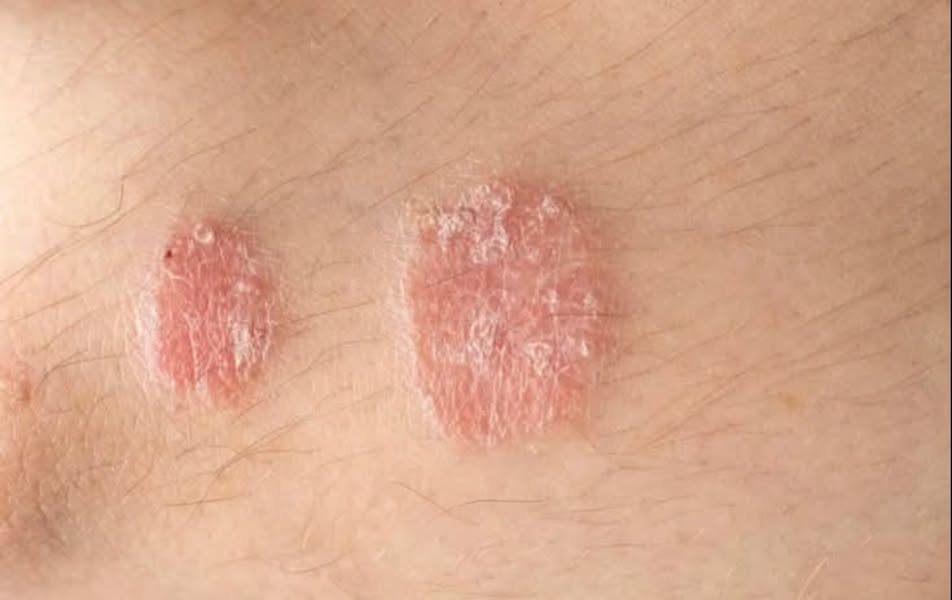What Is Psoriasis?
Psoriasis is not just a cosmetic issue — it’s a long-term (chronic) autoimmune condition that causes the rapid buildup of skin cells. This buildup creates thick, scaly patches that can be red, itchy, and painful. According to the Mayo Clinic, these patches are most commonly found on the elbows, knees, scalp, and lower back, but they can appear anywhere on the body.
More than 125 million people worldwide suffer from psoriasis, including over 8 million in the U.S. alone. It can severely affect your sleep, confidence, and even your ability to focus during daily tasks.
What Causes Psoriasis?
The exact cause of psoriasis is still unknown, but research points to a combination of genetic factors and environmental triggers. Some common triggers include:
- Infections (like strep throat)
- Stress
- Certain medications
- Cold, dry weather
- Skin injuries (cuts or sunburn)
- Alcohol or tobacco use
Because it’s an autoimmune disease, your body’s immune system mistakenly attacks healthy skin cells, speeding up their growth cycle.
Types of Psoriasis and Their Symptoms
Psoriasis isn’t a one-size-fits-all condition. There are five main types, each with distinct symptoms that require different forms of treatment and care.
1. Plaque Psoriasis (Most Common Type)
- Symptoms: Raised, red patches covered with silvery-white buildup of dead skin cells (plaques)
- Common Areas: Knees, elbows, scalp, and lower back
- Severity: Mild to severe
- Treatment Options: Topical creams, UV light therapy, or systemic medications
2. Guttate Psoriasis
- Symptoms: Small, drop-like spots
- Triggered By: Infections like strep throat
- Affected Areas: Torso, arms, and legs
- Treatment: Antibiotics (if infection-related), light therapy, or topical solutions
3. Inverse Psoriasis
- Symptoms: Smooth, shiny red patches in skin folds (like underarms, groin, under breasts)
- Challenges: Prone to fungal infections due to moisture and friction
- Treatment: Antifungal creams, steroid creams, and proper hygiene
4. Pustular Psoriasis
- Symptoms: White pustules (blisters filled with non-infectious pus), surrounded by red skin
- Can Be: Localized (hands and feet) or widespread
- Other Signs: Fever, chills, fatigue
- Urgency: Requires immediate medical attention
5. Erythrodermic Psoriasis
- Rarest and Most Severe Form
- Symptoms: Intense redness, peeling, and severe pain across large areas of the body
- Can Be Life-Threatening
- Triggers: Abrupt withdrawal from psoriasis treatment, severe infections or sunburn
- Action: Call your doctor or emergency services immediately
Nail and Joint Issues: Psoriatic Arthritis
Don’t ignore changes in your nails — thickening, discoloration, or separation from the nail bed can be signs of psoriatic arthritis. This form of arthritis is linked with psoriasis and can lead to joint damage if not treated early.
If you experience joint pain, swelling, or stiffness along with your skin symptoms, speak with a doctor or lawyer to understand your health rights and access insurance coverage or treatment options.
Why Early Treatment Matters
Delaying treatment can lead to more serious health problems including:
- Increased risk of psoriatic arthritis
- Higher risk of heart disease
- Emotional distress and depression
- Infections from cracked or bleeding skin
Early intervention can reduce flare-ups, prevent complications, and improve your mental and physical well-being.
Want to improve your health further? Full Story: 10 Signs You’re Eating Too Much Sugar
Managing Psoriasis the Right Way
There is no cure for psoriasis yet, but there are several powerful treatment options available to help manage it effectively:
1. Topical Treatments
These include corticosteroids, vitamin D analogues, salicylic acid, and moisturizers. These are usually the first line of defense for mild to moderate psoriasis.
2. Phototherapy
Exposing the skin to natural or artificial UVB light in controlled amounts can slow down cell growth and reduce inflammation.
3. Systemic Medications
For moderate to severe cases, doctors may prescribe oral or injectable medications that work throughout the body. These include biologics and immune-suppressing drugs.
4. Lifestyle Adjustments
- Maintain a healthy weight
- Avoid alcohol and tobacco
- Manage stress with relaxation techniques or classes
- Stay hydrated and follow an anti-inflammatory diet
Financial and Legal Support for Psoriasis Patients
Medical care can be expensive. If you’re struggling with the cost of treatment, it’s worth exploring:
- Insurance plans that cover dermatological visits and prescriptions
- Medical loans or claim recovery services to assist with out-of-pocket expenses
- Speaking with a credit advisor or attorney to ensure your rights to care are protected
- Options for financial aid through donate-based medical support programs
You might also qualify for employer support or government assistance if psoriasis affects your ability to work or live normally.
Take Charge of Your Skin Health
If you’re dealing with dry, itchy, red patches — or any of the symptoms mentioned — don’t wait. Psoriasis might not be curable, but it is very manageable with the right approach. Visit a dermatologist, explore your treatment options, and start making lifestyle changes today. You deserve to feel confident in your skin again.
Want to learn more about early health signs? Read: 20 Early Signs Your Body May Be Fighting Cancer
Final Thoughts
Your skin often reveals what’s happening inside your body. Psoriasis is more than skin-deep — it affects your confidence, relationships, and even your finances. Seek medical help, use available resources for treatment, and take proactive steps for a healthier, more vibrant life.
If you or someone you know is struggling with unexplained skin issues, don’t ignore the warning signs. Speak to a medical professional and explore your financial and emotional support options — including insurance, therapy, or health classes.
Your path to recovery and relief begins with awareness.
Let me know if you want a Facebook caption or thumbnail for this article.


